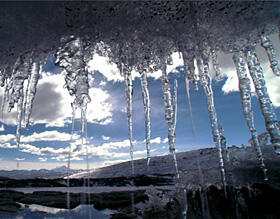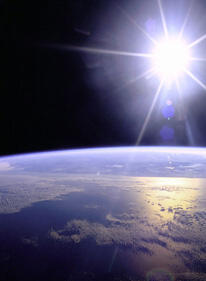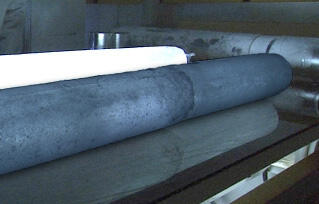Dear Chase,

When and how did the ice age end? Could another one start?
— Chase H., Grade 3
Geologist Ro Kinzler answers this question:
I like how your question addresses both the past and the future of ice ages.
It turns out that we are most likely in an "ice age" now. So, in fact, the last ice age hasn't ended yet!
Scientists call this ice age the Pleistocene Ice Age. It has been going on since about 2.5 million years ago (and some think that it's actually part of an even longer ice age that started as many as 40 million years ago).

We are probably living in an ice age right now! But Earth's climate doesn't stay cold during the entire ice age.
The curious thing about ice ages is that the temperature of Earth's atmosphere doesn't stay cold the entire time. Instead, the climate flip-flops between what scientists call "glacial periods" and "interglacial periods."
Glacial periods last tens of thousands of years. Temperatures are much colder, and ice covers more of the planet.
On the other hand, interglacial periods last only a few thousand years and the climate conditions are similar to those on Earth today. We are in an interglacial period right now. It began at the end of the last glacial period, about 10,000 years ago.
Scientists are still working to understand what causes ice ages. One important factor is the amount of light Earth receives from the Sun. The amount of sunlight that reaches Earth can vary quite a lot, mainly due to three factors:
- how much Earth is tilted relative to the Sun
- whether Earth wobbles a lot or a little as it spins on its axis (kind of like how a toy top can wobble a lot or a little as it spins)
- the shape of Earth's orbit as it goes around the Sun (whether it is shaped more like a circle or more like an ellipse or oval)

The variation of sunlight reaching Earth is one cause of ice ages.
Over thousands of years, the amount of sunshine reaching Earth changes by quite a lot, particularly in the northern latitudes, the area near and around the North Pole. When less sunlight reaches the northern latitudes, temperatures drop and more water freezes into ice, starting an ice age. When more sunlight reaches the northern latitudes, temperatures rise, ice sheets melt, and the ice age ends. But there are many other factors. So if you became a climate scientist one day, you could make your own discoveries!
To find out more about Earth's climate in the past, scientists study ice cores. These samples tell us that during the current ice age, climate on Earth has flip-flopped between glacial and interglacial periods at least 17 times!

Ice cores are cylinders of ice drilled through the thick sheets of Greenland and Antarctica.
So it is very likely that Earth will turn cold again, possibly within the next several thousand years. But, we have to keep in mind that human activities today are impacting climate on a global scale. So when we predict future climate changes, including the next glacial period, we need to consider the changes that humans are causing.
Keep on asking questions! There's still much we don't know about the past and future of our planet.
Explore More:
- Watch a video about scientists racing to rescue an ice core from a melting glacier.
- In this video, kids talk about how The Sea Ice is Melting! and what you can do about it.

Name:
Ro Kinzler
Job Title:
Director, National Center for Science Literacy, Education, and Technology
Known For:
Ro is a geologist. She is also the director of the department at the Museum that created OLogy!
Cool Fact:
Ro has trekked up and down the glacier-covered summit of Mount Shasta three times. This dormant
volcano
is 14,161 feet high!
Image Credits:
icicles, © AMNH; Sun and Earth, courtesy of NASA/JPL; ice core, © AMNH; Ro Kitzler, © AMNH.




 Biodiversity
Biodiversity
 Brain
Brain
 Genetics
Genetics
 Marine BiOLogy
Marine BiOLogy
 MicrobiOLogy
MicrobiOLogy
 PaleontOLogy
PaleontOLogy
 ZoOLogy
ZoOLogy
 AnthropOLogy
AnthropOLogy
 ArchaeOLogy
ArchaeOLogy
 Astronomy
Astronomy
 Climate Change
Climate Change
 Earth
Earth
 Physics
Physics
 Water
Water
